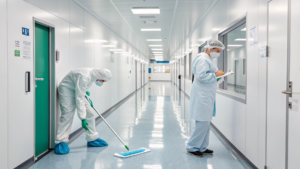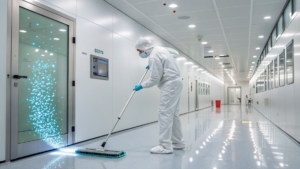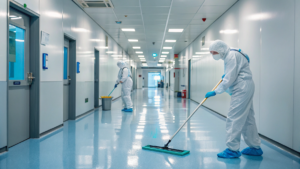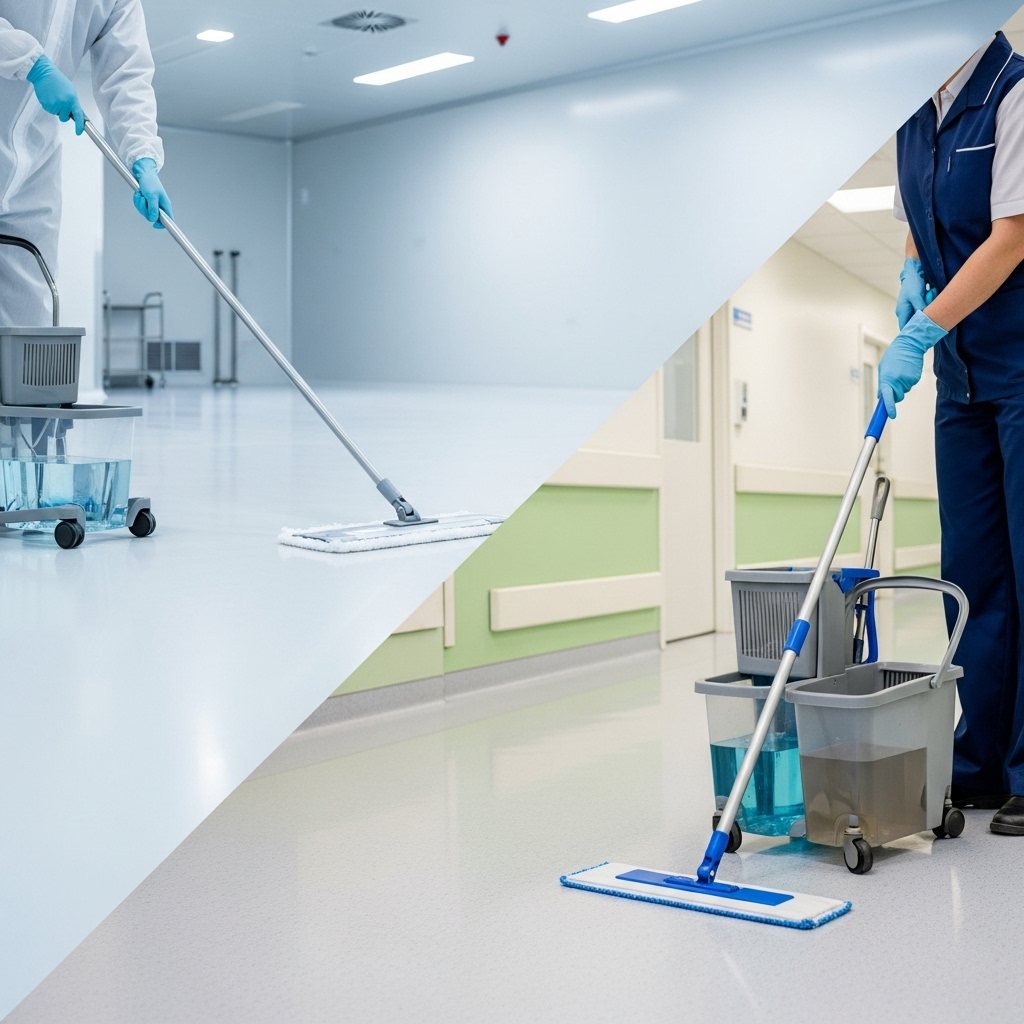
Cleanroom and Hospital Mop Systems: A Comprehensive Guide to Product Types, Standards, and Best Practices
The integrity of controlled environments hinges on meticulous contamination control. In sectors as diverse as pharmaceuticals, biotechnology, electronics, and healthcare, specialized cleaning regimens are non-negotiable. Among these, advanced mop systems stand out as fundamental tools for maintaining the critical levels of cleanliness and sterility demanded by cleanrooms and hospitals alike. While both environments share the overarching goal of minimizing particulate and microbial contamination, their specific requirements necessitate distinct product types, materials, design considerations, operational procedures, and rigorous compliance with international standards such as ISO, GMP, and USP. This comprehensive guide delves into the nuances of cleanroom and hospital mop systems, outlining their unique characteristics, optimal application scenarios, and the stringent validation methodologies essential for ensuring a safe and productive environment.
Product Types and Material Specifications
The foundation of any effective cleaning protocol lies in the selection of appropriate tools and materials. Both cleanroom and hospital settings employ specialized mop systems designed to prevent the introduction and spread of contaminants.
Cleanroom Mop Systems:
Cleanroom mop systems are engineered for environments where even the smallest particle can compromise product quality or research outcomes. Product types include large flat mops, stringless mops for confined spaces, and specialized mop heads and frames. These are often integrated into comprehensive systems featuring dedicated buckets and wringers, with options for single-use or reusable components. For instance, systems like the PharmaMOP GO facilitate single-step cleaning and disinfection across various surfaces, including floors, walls, ceilings, and equipment.
Material specifications are paramount in cleanrooms, focusing on low particle shedding, chemical resistance, and efficient contaminant capture. Common materials include:
- Microfiber: Highly valued for its exceptional absorbency, particle-capturing capabilities, and low-linting properties.
- Knitted Polyester: Offers very low linting, good thermal resistance, and high strength, releasing minimal particles. Woven or double-knitted polyester fabrics are preferred for ISO Class 4 to 6 cleanrooms and GMP Grade A/B areas due to their minimal particle shedding.
- Nonwoven Fabrics: Known for their low-linting characteristics.
- Micropolyester: Provides excellent absorbency and particle capture.
- Foam-wrapped materials and Cellulose sponge: Also used in specific mop head designs.
Mop frames are typically constructed from lightweight, non-shedding materials such as anodized aluminum or static-dissipative plastic to prevent the introduction of contaminants. The choice between single-use and reusable mops often depends on the cleanroom’s classification and economic considerations; single-use mops offer pre-validated cleanliness and sterility, ideal for Grade A/B environments, while reusable mops demand stringent laundering validation.
Hospital Mop Systems:
Hospital mop systems prioritize infection prevention and control, frequently utilizing advanced materials to combat healthcare-associated infections (HAIs). Microfiber mops have largely replaced conventional cotton loop mops due to their superior cleaning efficacy. Disposable mop pads are another significant product type, particularly favored for high-risk areas to prevent cross-contamination. Systems typically include ergonomic handles, lightweight mop frames, and multi-bucket setups.
The primary material for hospital mops ismicrofiber, a blend of ultrafine synthetic fibers (polyester and polyamide/nylon). This material is highly absorbent, capable of holding up to six times its weight in water, and lint-free. Crucially, microfiber possesses a positive charge that electrostatically attracts negatively charged dust and dirt particles, enhancing cleaning performance. Microfiber wet mops are considered sanitary, cost-effective, and ergonomic, effective at removing up to 98% of bacteria and 93% of viruses from surfaces with water alone, significantly outperforming cotton mops. Some traditional and hygiene mops still incorporate cotton and polyester blends or rayon fibers for good water and dirt absorption, sometimes with built-in antimicrobial properties for odor control.

Table 1: Comparison of Mop System Materials
| Feature | Cleanroom Mop Materials | Hospital Mop Materials |
|---|---|---|
| Primary Focus | Ultra-low particle shedding, chemical inertness, sterility | High microbial removal, absorbency, cross-contamination prevention |
| Common Materials | Knitted Polyester, Micropolyester, Nonwoven, Microfiber | Microfiber (Polyester/Polyamide blend), Cotton/Polyester blends |
| Particle Shedding | Extremely low; often heat-sealed edges for higher grades | Low (especially microfiber); lint-free properties |
| Chemical Resistance | High resistance to IPA, hydrogen peroxide, sporicides | Resistance to hospital-grade disinfectants |
| Sterility | Often autoclavable or gamma irradiated (SAL 10e-6) | Disposable pads; reusable microfiber requires validated laundering |
| Contaminant Capture | Excellent for particulates and bioburden | Superior for bacteria, viruses, and general dirt |
| Absorbency | Good to excellent (e.g., Micropolyester, Microfiber) | Excellent (Microfiber holds up to 6x its weight in water) |
Design Considerations
The design of mop systems is intrinsically linked to the environment they serve, with distinct priorities shaping their features and functionality.
Cleanroom Mop System Design:
Contamination control drives every aspect of cleanroom mop design.
- Low Particle Generation: Mops are crafted from lint-free, non-abrasive materials, frequently pre-laundered and sterilized, to minimize particle and fiber release, crucial for ISO Class 1-5 environments.
- Chemical Compatibility: Materials must withstand aggressive cleanroom disinfectants (IPA, hydrogen peroxide, quaternary ammonium compounds) without degrading or releasing new contaminants.
- Sterility: Many components are autoclavable or supplied pre-sterilized (gamma irradiated with an SAL of 10e-6) for use in aseptic and GMP manufacturing areas.
- Ergonomics: Lightweight, easy-to-manipulate designs reduce operator fatigue and enhance cleaning efficiency, particularly for multi-surface cleaning.
- Mop Head Size and Construction: Sizes vary for efficiency in large areas or maneuverability in tight spaces. Flat mops are ideal for cleaning under equipment, while loop-ended mops suit general floor cleaning. Heat-sealed edges are a feature for higher cleanroom classifications.
- Multi-Bucket Systems: These are essential to prevent the reapplication of dirty water, typically involving dedicated buckets for clean solution, clean rinse, and dirty rinse.
- ISO Classification: Mop selection is directly guided by the cleanroom’s ISO classification, dictating the level of particulate control required. For more details on selecting the right system for your ISO class, visit midposi.com/cleanroom-mop-selection.
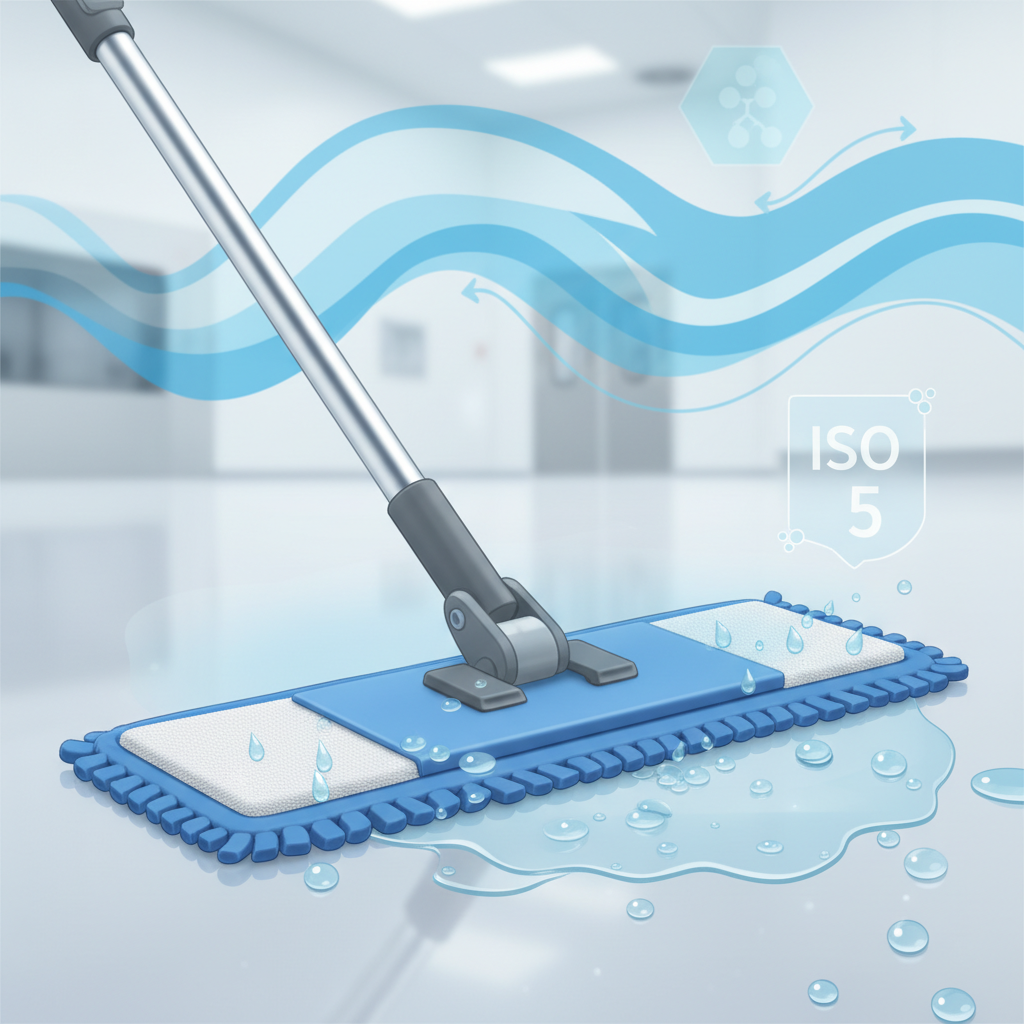
Hospital Mop System Design:
Hospital mop systems are engineered with a paramount focus on infection prevention and operational efficiency.
- Cross-Contamination Prevention: This is a critical design element, achieved through the use of one mop head per room (disposable or laundered between rooms) and multi-bucket systems to keep clean and dirty solutions separate. Color-coding of mop pads and handles further prevents cross-contamination between different risk zones.
- Ergonomics: Lightweight designs, notably microfiber mops, reduce staff strain, eliminating the need for heavy buckets and strenuous wringing. “Z” handle designs mitigate stress on wrists, arms, shoulders, and lower back.
- Chemical Compatibility: Mop materials must be compatible with hospital-grade disinfectants, including those effective against bloodborne pathogens, fungi, spores, and viruses.
- Dust and Particle Attraction: Microfiber’s electrostatic properties attract and hold dust and dirt effectively, preventing redistribution.
- Drying Time: Microfiber mops leave floors merely damp, accelerating drying times and reducing slip and fall risks—a significant safety advantage in busy healthcare environments.
- Cleanability of Furniture: Hospital environments also consider furniture design, favoring features that facilitate easy cleaning and prevent material entrapment.
Table 2: Design Priorities of Mop Systems
| Design Aspect | Cleanroom Mop Systems | Hospital Mop Systems |
|---|---|---|
| Primary Objective | Minimize particle & microbial generation, chemical inertness | Maximize infection prevention, minimize cross-contamination |
| Material Properties | Low-linting, non-abrasive, non-shedding, chemical resistant | High absorbency, electrostatic dust capture, chemical resistant |
| آلودگی کا کنٹرول | Multi-bucket systems, sterile materials, hands-free options | One mop per room, multi-bucket, color-coding |
| Sterility Requirement | Pre-sterilized, autoclavable (for aseptic areas) | Disposable options, thermal disinfection for reusables |
| Ergonomics | Lightweight, easy-to-manipulate, multi-surface adaptability | Lightweight, reduced wringing, “Z” handles for reduced strain |
| Chemical Compatibility | Broad compatibility with strong cleanroom disinfectants | Compatibility with hospital-grade disinfectants, sporicides |
| Particle/Bioburden | Extremely low particle release (Helmke drum test) | High efficacy in removing bacteria/viruses, reduced HAIs |
| Regulatory Driver | ISO classifications, GMP | Infection control guidelines, CDC, WHO |
Operational Procedures and Application Scenarios
Effective mop systems are only as good as the procedures governing their use. Both cleanroom and hospital environments demand precise protocols to maximize effectiveness and maintain stringent hygiene.
Cleanroom Mop Systems Operational Procedures:
Cleanroom mop systems are indispensable across various industries, including pharmaceuticals, biotechnology, electronics, and aerospace, where strict ISO or cGMP cleanliness levels are paramount. They are used for floors, walls, ceilings, and internal surfaces of bio-safety cabinets, isolators, and Restricted Access Barrier Systems (RABS).
Operational protocols in cleanrooms are highly structured to prevent cross-contamination.
- Multi-Bucket Systems: Two- or three-bucket configurations are standard. Separate buckets are used for clean solution, rinsing, and waste, ensuring that dirty water is never reapplied.
- Water Quality: Distilled or ionized water is crucial to avoid introducing contaminants found in tap water.
- Mop Head Management: Mop heads, made of low-linting, non-abrasive materials, are often autoclavable and chosen for chemical compatibility.
- Specific Mopping Techniques: Long, overlapping strokes are used (e.g., figure-eight patterns for floors, top-to-bottom for walls) with 10-20% overlap to ensure comprehensive coverage and prevent re-contamination. Cleaning should proceed from the cleanest area, furthest from the exit, moving backward.
- Hands-Free Systems: Many modern systems incorporate hands-free mop head changes, further reducing contamination risk and improving ergonomics.
- Pre-saturated Systems: Pre-saturated wipe covers or pre-impregnated mops eliminate the need for buckets, simplifying procedures and ensuring consistent chemical dilution.
- Standard Operating Procedures (SOPs): Detailed SOPs are critical, specifying cleaning frequencies (based on cleanroom air class), equipment use, and accessory guidelines. These procedures are rigorously developed and validated. To learn more about optimizing your cleanroom cleaning SOPs, visit midposi.com/cleanroom-sop-optimization.
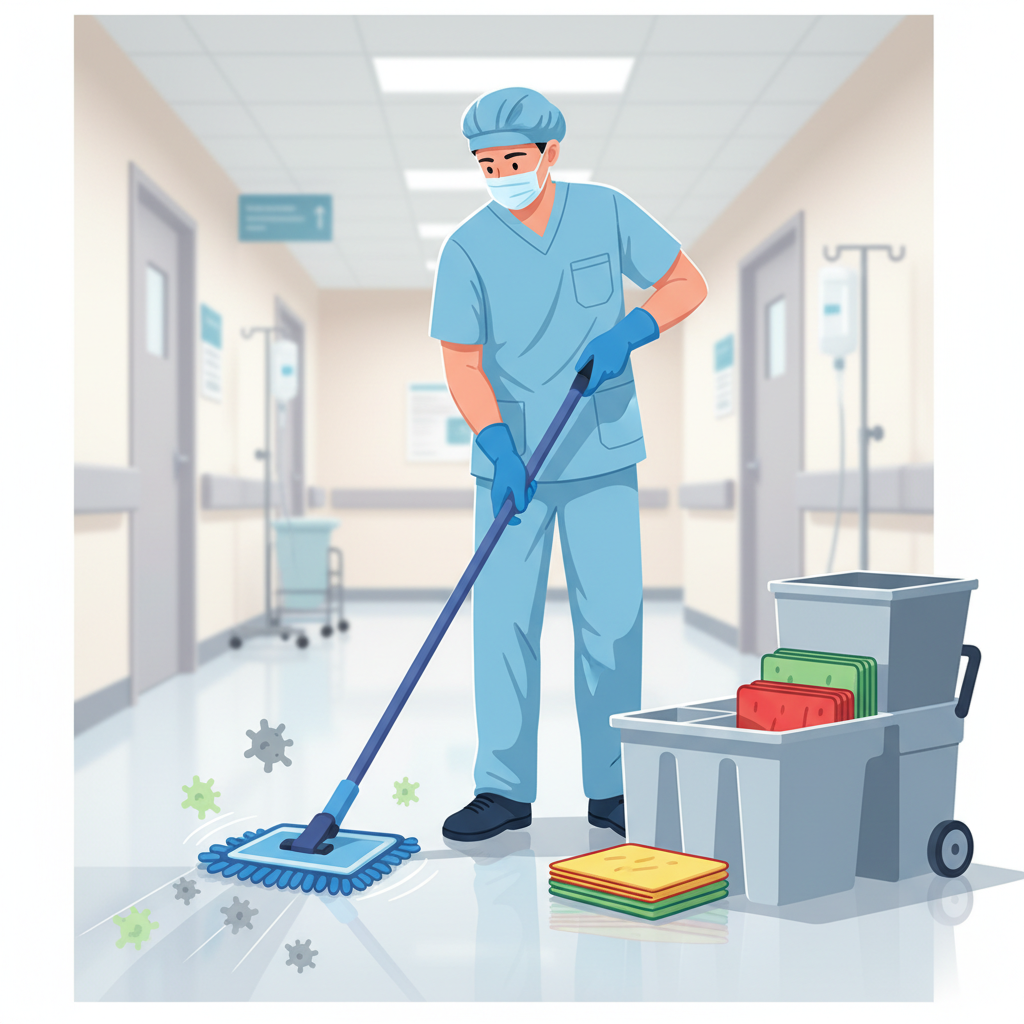
Hospital Mop Systems Operational Procedures:
Hospital mop systems are vital for infection control in healthcare facilities, encompassing patient rooms, public areas, and operating theaters. They are utilized for daily cleaning, disinfection, and applying antimicrobial chemicals to large surfaces.
- Frequent Mop Head and Solution Changes: To prevent cross-contamination, especially between patient areas, frequent changes of mop heads and cleaning solutions are essential. Disposable mop pads are highly beneficial, eliminating laundering and ensuring a fresh, clean mop for each area. These disposable pads can remove 99.9% of microbes, including bacteria and viruses, even with water alone.
- Triple Bucket System: A common setup involves three buckets: one for the cleaning solution, one for rinsing, and a third for waste.
- Cleaning Direction: Cleaning typically progresses from the least soiled areas to the most soiled, and from higher to lower surfaces. Dust mopping precedes wet mopping to prevent dirt accumulation.
- Ergonomics: Lightweight handles and foot-operated wringers enhance worker safety and productivity.
- Color-Coding: Mop pads and handles are often color-coded to delineate cleaning areas and tasks, preventing cross-contamination (e.g., red for high-risk, yellow for lower-risk, green for food handling, blue for general areas).
- Mechanized Cleaning: Mini floor scrubbers are increasingly adopted for small, tight spaces, offering more effective and efficient cleaning than traditional mop-and-bucket methods.
Performance Characteristics and Effectiveness
The true measure of a mop system lies in its performance—its ability to effectively control contamination and contribute to a safer environment.
Cleanroom Mop System Performance:
- Contamination Control: The paramount characteristic is the minimization of particulate release and bioburden, which is critical for product yield and safety. Cleanroom mop systems are designed to trap and remove microscopic contaminants without introducing new ones.
- Cleaning Efficiency: Effective capture of particles and contaminants, uniform application of disinfectants, and the ability to clean multiple surfaces are key. They dislodge residue or biofilm that could impede the effectiveness of cleaners and solvents.
- Compliance: Adherence to ISO/GMP standards and other regulatory guidelines is a fundamental performance metric.
- Durability and Longevity: Mop heads must withstand repeated laundering (for reusable options) or consistently deliver high performance as single-use items.
- Absorbency and Fluid Retention: Materials like micropolyester and microfiber offer high absorbency, crucial for effective cleaning solution delivery and contaminant capture.
Hospital Mop System Performance:
- High Decontamination Efficacy: Microfiber pads significantly remove bacteria and viruses, even with water alone, directly contributing to the reduction of healthcare-associated infections (HAIs). Studies show new cleaning systems can reduce bacterial contamination on floors by 93.6%, significantly better than conventional methods (79.8%).
- Reduced Water and Chemical Usage: Microfiber systems drastically cut water and cleaner consumption, aligning with green cleaning initiatives.
- Improved Infection Control: Minimizing the spread of pathogens like C. difficile and MRSA is a primary performance indicator, supporting overall hygiene and reducing HAIs. The Centers for Disease Control and Prevention (CDC) provides extensive guidelines on environmental infection control in healthcare facilities, emphasizing the role of effective cleaning.
- Operational Efficiency: Streamlined cleaning processes, reduced labor, and faster turnaround times enhance productivity.
- Durability and Longevity: Reusable microfiber mops offer durability, provided they undergo proper laundering (controlled heat, no chlorine bleach) to maintain effectiveness.
- Odor Resistance: Some systems feature antimicrobial properties for odor control.
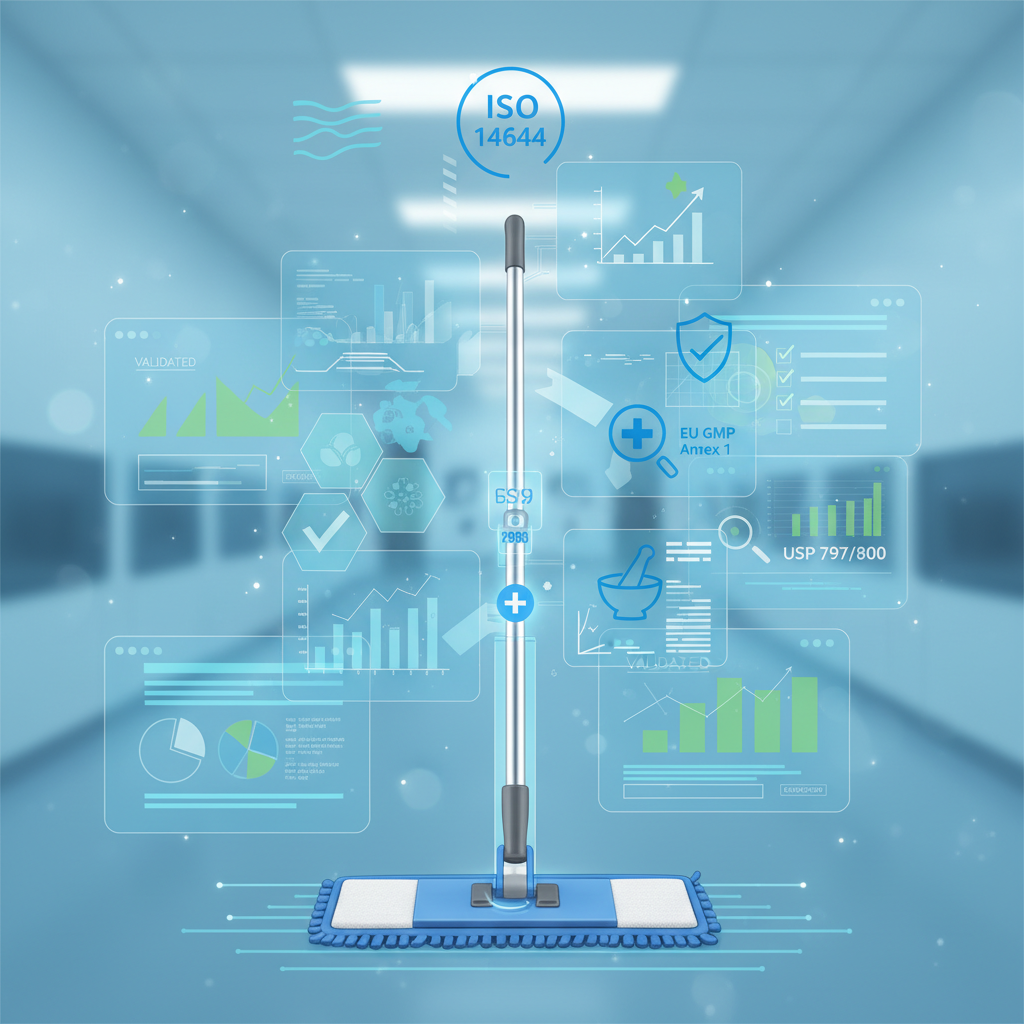
Table 3: Performance Metrics and Effectiveness
| Performance Metric | Cleanroom Mop Systems | Hospital Mop Systems |
|---|---|---|
| Contamination Focus | Particulate (non-viable) & Bioburden (viable) control | Microbial (bacteria, viruses) removal, HAI reduction |
| Cleaning Efficacy | Effective particle capture, uniform disinfectant application | High percentage removal of microbes (99.9% for microfiber) |
| Chemical Usage | Optimized application with precise dosing | Significantly reduced water & chemical use (up to 95%) |
| Drying Time | Efficient, aids in rapid re-entry | Rapid, reduces slip/fall risks |
| پائیداری | Withstands sterilization/laundering or consistent single-use | Durable for repeated laundering, maintains efficacy |
| Compliance Aid | ISO, GMP standards | Infection control guidelines, CDC recommendations |
| Key Benefit | Product yield, process integrity, regulatory adherence | Patient safety, public health, operational cost savings |
Standard Compliance (ISO, GMP, USP)
Adherence to regulatory standards is non-negotiable for both cleanroom and hospital mop systems, ensuring safety, efficacy, and product quality.
Cleanroom Mop Systems Compliance:
Cleanroom mop systems must comply with international standards like ISO 14644-1 and ISO 14644-2, which govern air cleanliness classification and monitoring.
- ISO 14644-1: Classification of Air Cleanliness by Particle Concentration: This standard classifies cleanrooms based on airborne particle concentration. Mop systems contribute by effectively removing surface contamination, preventing it from becoming airborne. Mop materials must be low-shedding to avoid introducing new particles. For instance, flooring chosen for a GMP Grade A cleanroom must meet at least ISO 5 according to this standard. More information on cleanroom classifications can be found on the International Organization for Standardization (ISO) website.
- ISO 14644-2: Monitoring to Provide Evidence of Cleanroom Performance: This standard outlines monitoring requirements to demonstrate continuous performance. Rigorous cleaning protocols, including effective mopping, are essential operational practices that help maintain the specified cleanliness limits.
- ISO 14644-18: Assessment of Suitability for Use of Consumables: This guideline directly applies to mops, detailing how to assess cleanliness attributes (particles, chemical residues, biocontamination) and functional performance (absorption, chemical compatibility, sterilizability).
- Material and Design: Mops must be constructed from low-linting, non-shedding materials (microfiber, knitted polyester) and be chemically inert and compatible with disinfectants (e.g., 70% IPA, hydrogen peroxide). For higher classifications (ISO 1-5), heat-sealed edges are preferred.
- Sterility: For aseptic zones (EU GMP Grade A/B), sterility at the point of use is mandatory. Mop materials must be compatible with sterilization techniques like autoclaving or electron beam sterilization.
- Single-use vs. Reusable: Single-use mops are pre-validated for cleanliness and sterility, reducing cross-contamination risks. Reusable mops require a fully validated laundering process.
- Cleaning Procedures and Frequency: Documented, rigorous cleaning schedules and SOPs are crucial, specifying techniques like multi-bucket systems and cleaning frequencies based on air class.
Hospital Mop Systems Compliance:
Hospital mop systems are subject to stringent regulations from EU GMP Annex 1, USP 797, and USP 800, particularly in areas where sterile compounding or hazardous drug handling occurs.
- EU GMP Annex 1: Manufacture of Sterile Medicinal Products: Emphasizes a risk-based approach to contamination control. Cleaning and disinfection are distinct. For aseptic zones (Grade A and B), mop materials must be sterile at the point of use and compatible with sterilization methods. Disinfectants should be rotated, including sporicidal agents, and residues must be effectively removed. Disinfectants and detergents for Grade A/B areas should be sterile.
- USP 797: Pharmaceutical Compounding—Sterile Preparations: This standard sets requirements for preventing patient harm from contamination during sterile compounding.
- Mop Characteristics: Mops must be non-shedding, low-lint, preferably made of synthetic microfibers, and dedicated to specific areas (buffer/clean area, ante-area). Porous materials like wood are prohibited for reusable tools.
- Cleaning Frequency: Floors in buffer/clean areas and ante-areas must be cleaned daily. Walls, ceilings, and storage shelving are cleaned monthly, with a sporicidal disinfectant applied monthly for Category 1, 2, and 3 Compounded Sterile Preparations (CSPs).
- Disinfectant Application: Sterile disinfectant and sporicidal agents are required for cleaning within hoods. Proper contact time and uniform application are critical.
- USP 800: Hazardous Drugs—Handling in Healthcare Settings: Focuses on protecting personnel, patients, and the environment from hazardous drug (HD) exposure.
- Scope: All areas where HDs are handled require cleaning.
- Four-Step Cleaning Process: Mandates deactivation, decontamination, cleaning, and disinfection.
- Application Method: Wetted wipes are preferred over spray bottles to prevent HD residue spread.
- Environmental Monitoring: Wipe samples are recommended every six months to detect HD residues on surfaces. For a comprehensive overview of USP 797 and USP 800 compliance, see guidance from the United States Pharmacopeia (USP).
Table 4: Key Compliance Standards and Validation Focus
| Standard/Guideline | Primary Focus | Mop System Relevance | Validation Focus |
|---|---|---|---|
| ISO 14644-1 & -2 | Air cleanliness classification & monitoring (cleanrooms) | Low particle shedding, surface particle removal, operational practices to maintain air quality | Airborne particle counts, differential pressure, airflow, recovery time, filter leakage |
| EU GMP Annex 1 | Manufacture of sterile medicinal products (pharmaceuticals) | Sterility of mops & agents (Grade A/B), disinfectant compatibility/rotation, residue removal, validated laundering for reusable mops | Microbial limits (viable/non-viable), cleaning & disinfection efficacy, residue analysis, sterilization cycles |
| USP 797 | Sterile compounding (healthcare) | Non-shedding, low-lint materials; dedicated use, specific cleaning frequency & agents (sterile IPA, sporicides) | Gloved fingertip tests, media fill tests, surface & air sampling for microbial contamination |
| USP 800 | Handling hazardous drugs (healthcare) | Four-step cleaning process (deactivation, decontamination, cleaning, disinfection), wetted wipes, environmental wipe sampling for HD residue | Surface residue testing for HDs, cleaning agent compatibility, personnel protection measures |
Best Practices and Validation Methodologies
Achieving and sustaining high levels of cleanliness requires not only the right tools and protocols but also a robust validation framework.
Cleanroom Mop Systems Best Practices:
- Ergonomic and Touchless Systems: Employing ergonomic and touchless mopping systems, such as the PurMop® 2.0 ERGO, minimizes human contact with contaminated surfaces, reducing cross-contamination.
- Disposable Mops: Cleanroom-certified disposable mops made of 100% polyester, with limited and controlled particle shedding, are often preferred.
- Reproducible Processes: Systems enabling precise, reproducible dosing of disinfectants ensure consistent saturation and effective cleaning, which is easier to validate.
- Cleanroom-Safe Mops: Avoid traditional string mops due to shedding. Utilize flat or stringless mops made of tubular polyester or sponge-head types for different surfaces.
- Multi-Bucket Systems: A three-bucket system (solution, clean rinse, wastewater) is crucial to prevent re-contamination.
- Pure Water: Using distilled or deionized water for solutions reduces contaminant introduction.
- Defined Mopping Area and Procedure: Establish clear SOPs for mopping, defining surface area coverage per mop head, using unidirectional, overlapping strokes, and cleaning from cleanest to dirtiest areas.
- Regular Equipment Cleaning: All mopping equipment must be cleaned and disinfected after each use.
- Professional Cleanroom Laundry Services: For reusable mops, validated professional laundry services are essential to ensure decontamination, particle removal, and compliance. Explore advanced cleanroom consumables and services at midposi.com/cleanroom-consumables.
Hospital Mop Systems Best Practices:
- Microfiber Mops: Highly recommended for their superior absorbency and efficiency in capturing bacteria and dirt, reducing cross-contamination.
- Pre-treatment and Warm Water: Pre-treat mops with disinfectant. Use warm (lukewarm) water for thorough cleaning.
- Regular Rinsing and Changing: Rinse mops frequently. Change mop pads after each patient room, especially for infectious patients, and laundered after every use.
- Dual Bucket Systems: Separate clean and dirty water to prevent reintroduction of contaminants. Avoid “double-dipping.”
- Ward-End Laundry: Utilize professional laundry services for thermal disinfection to meet hygiene standards.
- Color-Coding: Implement color-coding for different areas to prevent cross-contamination.
- Systematic Cleaning: Clean from least soiled to most soiled areas, and from high to low surfaces.
- Training and Audits: Implement regular cleaning schedules, continuous staff training, and periodic audits to assess effectiveness.
Validation Methodologies:
Cleaning validation is a systematic and documented process proving that a cleaning procedure consistently reduces contaminants to an acceptable level.
Cleanroom Mop Systems Validation:
Guided by FDA 21 CFR Part 211, EU GMP Annex 15, and ICH Q7 guidelines, cleanroom validation follows a three-phase approach:
- Phase 1: Process Design and Laboratory Studies (DQ): Evaluate worst-case conditions, cleaning agent effectiveness, surface compatibility, and optimal parameters. Verify cleanroom design against user requirements.
- Phase 2: Qualification (IQ, OQ, PQ):
- Installation Qualification (IQ): Verify correct equipment installation.
- Operational Qualification (OQ): Demonstrate the cleanroom functions as intended, including alarms.
- Performance Qualification (PQ): Requires at least three consecutive successful cleaning cycles to demonstrate consistent operation within parameters, achieving desired environmental outcomes (airborne/surface particulates, viable microbes, humidity, differential pressure, temperature).
- Phase 3: Routine Monitoring: Ongoing monitoring with defined alert limits and corrective actions to ensure sustained compliance.
- Sampling Methods: Direct surface sampling (swab method) for hard-to-clean areas and indirect sampling (rinse method) for larger or inaccessible areas are used.
- Analytical Methods: Validated methods with appropriate sensitivity (e.g., detection limits ≤ 1/10 of acceptance criteria) and high recovery efficiency (≥80%) are crucial for detecting product residues, cleaning agent residues, and microbial bioburden. Visual inspection (normal and UV light) is also a criterion.
- Acceptance Criteria: Established limits for chemical residues (e.g., no more than 10 ppm of one product in another, or 0.1% of a therapeutic dose) and microbiological limits.
- Documentation and Revalidation: Comprehensive documentation (SOPs, protocols, reports) and periodic revalidation (e.g., every three years or after changes) are essential.
Hospital Mop Systems Validation:
Validation in hospitals focuses on confirming the efficacy of cleaning and disinfection protocols to reduce microbial burden and prevent HAIs.
- Disinfectant Efficacy Testing: Validates that disinfectants are effective against prevalent hospital pathogens under real-world conditions (e.g., AOAC International methods against Pseudomonas aeruginosa and Staphylococcus aureus).
- Real-World Simulation Tests: Evaluate contact time, surface compatibility, and practical application methods in actual hospital settings.
- Monitoring Cleaning Efficacy:
- Visual Assessment: Identifies visible dirt, but is insufficient for microbial contamination.
- ATP Monitoring: Rapidly measures residual organic matter, indicating cleaning effectiveness.
- Microbiological Methods: Direct sampling (aerobic colony counts, specific pathogen detection) provides evidence of microbial reduction.
- Fluorescent Markers/UV Light: Identify inadequately cleaned areas.
- Protocol Validation: Validating cleaning procedures for multipurpose equipment (e.g., in hospital pharmacies) ensures patient safety.
- Environmental Surveillance: Routine microbial monitoring in high-risk areas helps identify persistent contamination.
- Risk-Based Approach: Identifying contamination vectors, defining cleaning process maps, and establishing validation points with corrective actions.
Conclusion
The selection, implementation, and rigorous validation of mop systems in cleanrooms and hospitals are not merely operational tasks; they are critical components of a holistic contamination control strategy. From the ultra-low particle shedding requirements of an ISO Class 5 cleanroom to the imperative of preventing healthcare-associated infections in a busy hospital ward, the stakes are exceptionally high. By understanding the distinct product types, materials, and design considerations, diligently adhering to precise operational procedures, and strictly complying with international standards such as ISO 14644, EU GMP Annex 1, and USP 797/800, organizations can establish robust cleaning programs. The investment in advanced mop systems, coupled with thorough training, meticulous documentation, and continuous validation, ensures a safe, compliant, and ultimately more productive environment, safeguarding both sensitive products and invaluable human lives.
اکثر پوچھے گئے سوالات
What are the primary types and materials of mop systems used in cleanrooms?
Cleanroom mop systems include large flat mops, stringless mops, and specialized mop heads and frames, often integrated into comprehensive systems with dedicated buckets and wringers. Materials are selected for low particle shedding, chemical resistance, and efficient contaminant capture. Common materials are microfiber, knitted polyester (especially woven or double-knitted for ISO Class 4-6 and GMP Grade A/B areas), nonwoven fabrics, micropolyester, foam-wrapped materials, and cellulose sponge. Mop frames are typically constructed from lightweight, non-shedding materials like anodized aluminum or static-dissipative plastic.
What types of mop systems and materials are commonly used in hospitals?
Hospital mop systems frequently utilize microfiber mops due to their superior cleaning efficacy over conventional cotton loop mops. Disposable mop pads are also a significant product type, especially in high-risk areas to prevent cross-contamination. Microfiber, a blend of ultrafine synthetic fibers (polyester and polyamide/nylon), is highly absorbent, lint-free, and electrostatically attracts dust and dirt particles. Some traditional and hygiene mops still incorporate cotton and polyester blends or rayon fibers for water and dirt absorption, sometimes with built-in antimicrobial properties.
What are the key design considerations for cleanroom mop systems?
Cleanroom mop system design is driven by contamination control. Key considerations include crafting mops from lint-free, non-abrasive materials to minimize particle and fiber release (crucial for ISO Class 1-5 environments). Materials must demonstrate chemical compatibility with aggressive cleanroom disinfectants, and many components are autoclavable or supplied pre-sterilized (gamma irradiated) for aseptic areas. Ergonomic designs, appropriate mop head sizes for various tasks (e.g., heat-sealed edges for higher classifications), and multi-bucket systems are also essential to prevent reapplication of dirty water. Mop selection is directly guided by the cleanroom’s ISO classification.
What are the key design considerations for hospital mop systems?
Hospital mop systems are engineered with a paramount focus on infection prevention and operational efficiency. Critical design elements include preventing cross-contamination through practices like using one mop head per room (disposable or laundered between rooms), multi-bucket systems, and color-coding of mop pads and handles. Ergonomics (lightweight designs, “Z” handles), compatibility with hospital-grade disinfectants, microfiber’s electrostatic properties for dust and particle attraction, and rapid drying times to reduce slip and fall risks are also significant considerations.
How are cleanroom mop systems used and what are their operational protocols?
Cleanroom mop systems are indispensable across various industries (pharmaceuticals, biotechnology, electronics, aerospace) for cleaning floors, walls, ceilings, and internal surfaces of critical equipment. Operational protocols are highly structured to prevent cross-contamination, typically involving multi-bucket systems (clean solution, clean rinse, waste), the use of distilled or ionized water, and specific mopping techniques like long, overlapping strokes (e.g., figure-eight patterns for floors, top-to-bottom for walls) from the cleanest area backwards. Hands-free systems and pre-saturated mops reduce contamination risk and simplify procedures. Detailed Standard Operating Procedures (SOPs) are critical, specifying cleaning frequencies based on cleanroom air class.
What are the operational procedures and application scenarios for hospital mop systems?
Hospital mop systems are vital for infection control in healthcare facilities, encompassing patient rooms, public areas, and operating theaters. Operational procedures emphasize frequent mop head and solution changes (often using disposable mop pads) to prevent cross-contamination, especially between patient areas. A common setup involves a triple bucket system (cleaning solution, rinsing, waste). Cleaning typically progresses from least soiled to most soiled areas and from higher to lower surfaces. Color-coding of mop pads and handles helps delineate cleaning areas and tasks, preventing cross-contamination. Lightweight handles and foot-operated wringers enhance worker safety and productivity.
What compliance standards are critical for cleanroom mop systems?
Cleanroom mop systems must comply with international standards such as ISO 14644-1 (Classification of Air Cleanliness by Particle Concentration) and ISO 14644-2 (Monitoring to Provide Evidence of Cleanroom Performance), which govern air cleanliness. Mop materials must be low-shedding to prevent introducing new particles and aid in surface contamination removal. ISO 14644-18 specifically details how to assess the suitability of consumables like mops. For aseptic zones (EU GMP Grade A/B), sterility at the point of use is mandatory, requiring mop materials compatible with sterilization techniques like autoclaving or electron beam sterilization. Rigorous cleaning schedules and detailed SOPs, based on cleanroom air class, are also crucial.
Which key standards govern hospital mop systems, especially in sterile compounding and hazardous drug handling?
EU GMP Annex 1 (Manufacture of Sterile Medicinal Products): Requires sterile mop materials and agents for aseptic zones (Grade A and B), mandates disinfectant rotation (including sporicidal agents), and effective residue removal.
USP 797 (Pharmaceutical Compounding—Sterile Preparations): Mops must be non-shedding, low-lint (preferably synthetic microfibers), and dedicated to specific areas. Floors in buffer/clean areas and ante-areas must be cleaned daily, with walls, ceilings, and shelving cleaned monthly, applying sporicidal agents monthly for all CSP categories.
USP 800 (Hazardous Drugs—Handling in Healthcare Settings): Requires a four-step cleaning process (deactivation, decontamination, cleaning, disinfection). Wetted wipes are preferred over sprays to avoid residue spread. Environmental wipe samples are recommended every 6 months.


